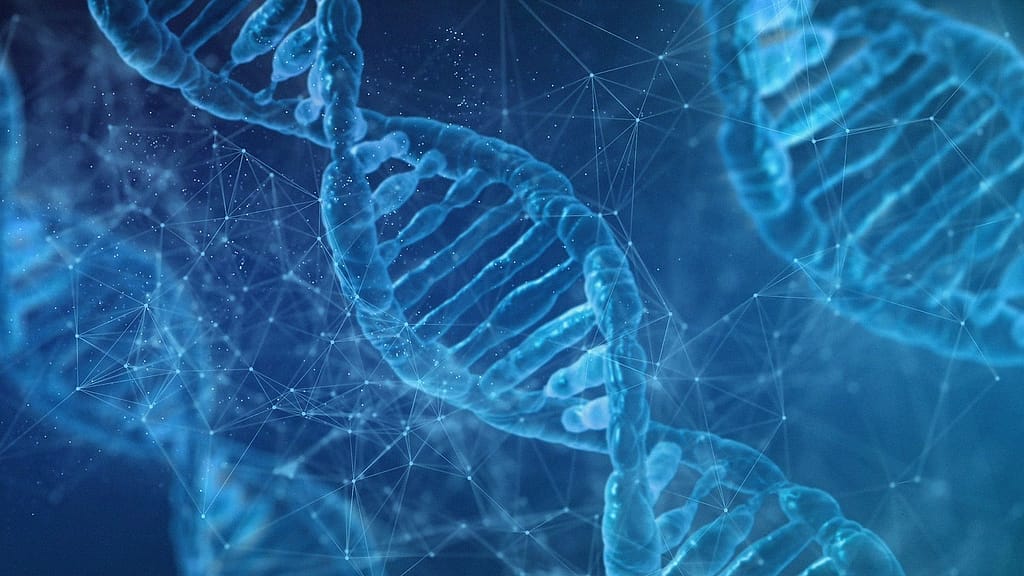7 Hidden Powers to Awaken Your Authentic Self
Who are you, really? Read below to discover how to uncover your authentic self and how to embrace your true identity! Skip intro

Who are you, really?
It’s a question that has plagued philosophers, psychologists, and probably every person who’s ever had a sleepless night.
In today’s world, many of us struggle with a profound sense of disconnection from our true selves.
This identity crisis can lead to anxiety, unfulfillment, and a nagging feeling that we’re not living up to our full potential. Ultimately, creating a cycle of self-doubt that seems impossible to break.
That’s where our seven lessons come in, to help you gain insights into the complexities of identity, thereby helping you navigate this maze of self.
Through exploring the weird world of twin studies and the mind-blowing concept of epigenetics, this article will uncover key insights that shed light on why you are the way you are.
We’ll dive into why your identity shape-shifts faster than a chameleon on espresso, and why Jim Carrey might know more about the illusion of self than your average guru.
Table of Contents
1. The Multifaceted Self: Fluid Like Water
Ever notice how you’re a different person depending on who you’re with?
That’s not you being fake; it’s your identity doing what it does best: adapting.
You might be a nurturing parent at home, a focused professional at work, and a carefree friend during social outings.
Similarly, in some situations, you shift between being a knowledgeable teacher or the eager student.

This shape-shifting isn’t just you being wishy-washy. Rather, it’s a superpower. By adjusting your identity to fit different situations, you’re able to navigate life’s complex social waters with greater ease and effectiveness.[1]
Scientists refer to this phenomenon as “situational identity”—the understanding that our identities are not fixed but rather co-created for specific situations or contexts.[2]

For instance, in interactive relationships—whether acquaintances, friendships, or deeper connections—our identity emerges through a dynamic interplay between ourselves and our environment.[3]
In other words, we come to a mutual understanding together about who we are with others.
This identity fluidity fosters a strong and resilient self that can face challenges with grace.
Understanding this fluidity helps us confidently present the most appropriate version of ourselves in diverse situations. Helping us move across obstacles like water, with our dynamic, changeable selves.
Want to cultivate an extraordinary mindset that adapts effortlessly?
Check out Mindvalley’s Be Extraordinary course, designed to help you evolve into your highest level of human potential, master your mindset, and unleash peak performance!
2. Actor’s Secret: Identity as a Performance
Want to see identity fluidity taken to the extreme? Look no further than method acting.
Take Jim Carrey’s transformation into Andy Kaufman, one of the most influential comics of all time, in the movie Man on the Moon.
This required Carrey to play both the role of Andy Kaufman and his unhinged alter-ego, Tony Clifton.
But here’s the twist: Carrey didn’t just portray Andy Kaufman and his alter-ego, Tony, on set. He did this off set as well.
For four months, he inhabited both personas 24/7.
Adopting their mannerisms, speech patterns, and thought processes seamlessly. So much so that even Kaufman’s family members were shocked by the resemblance.
Carrey’s remarkable transformation has been captured in the documentary Jim & Andy: The Great Beyond. See trailer below!
This total character immersion had a profound effect on Carrey. After the project, he struggled to return to his “real” self.
See, he’d come to understand a fundamental teaching found in both ancient wisdom and modern neuroscience: the illusion of self.[4]
In essence, the realisation that our identities are not fixed, but rather stories we tell ourselves and others.
Jim Carrey’s transformation is a perfect example that who we are isn’t set in stone. Rather, it’s a performance we can adapt and change.
However, it’s not all fun and games.
This level of identity shifting can be psychologically taxing, as seen in Heath Ledger’s tragic death shortly after his intense portrayal of the Joker.
Ultimately, highlighting both the power and the potential danger of treating identity as a performance.
Actors like Jim Carrey push the limits of self-transformation—but what if you could train your brain to be just as flexible?
Superbrain helps you sharpen your mind and activate your brain’s limitless potential. This Mindvalley course will let you achieve life-changing elevations in both your personal-life and career.
3. The Genetic Code: Twin Studies
While our identities may be fluid, there’s a crucial question that arises: how much of our personality is set in stone due to genetics?
Enter twin studies, particularly those involving identical twins separated at birth.

These studies offer unique insights into how our identities are influenced by genetic factors.
Take the most renowned twin study of all time, The Minnesota Study of Twins Reared Apart. This study followed identical twins raised by different families for decades.[5]
Remarkably, despite growing up in different environments, the separated twins showed striking similarities in personality, intellectual aptitude, and even alpha brainwave patterns—traits that ranked just below fingerprints and height in similarity!
Astonishingly, some twins were also found to have similar hobbies, professions, and even facial expressions.[6,7]
Generally speaking, highly heritable traits include aggression, intelligence, neuroticism, drug use, and novelty seeking. Conversely, food preferences and religious beliefs show low heritability.[8,9,10]
This suggests that while genetics play a significant role in shaping certain aspects of our identity, environmental factors and personal experiences still strongly influence one another.
Thus, while our nature (genetics) clearly contributes to the predisposition of certain traits, to what extent can we blame our nurture (parents) for who we are today? Keep reading to find out more.
Want to hack your hidden potential and reshape inherited beliefs?
The The Silva Ultramind System can help you achieve this, fighting any genetic predispositions that may be holding you back. This Mindvalley course will teach you how to harness altered states of consciousness—like alpha and theta brainwaves—to reshape negative thought patterns and tap into your highest personal growth.
4. Blame The Parents—Or Yourself
As stated in Psychology Today, not many people consciously choose their identities; rather, they internalise the values of their primary caregivers and the dominant culture.[11]
Consequently, these values may not align with one’s authentic self. Potentially leading to an unfulfilling or even meaningless life.

Firstly, not only do we inherit genetic traits from our parents, but our primary caregivers also serve as the first and main role models.
Shaping how we ultimately behave and react in various contexts.
For example, complex traits like attitudes towards money, preferred dynamic in romantic relationships, or even specific fears—such as arachnophobia—can often be traced back to subconscious modelling from our early years.[12,13,14]
This process also involves unwittingly imitating beliefs, behaviours, facial expressions, and emotional responses of our primary caregivers.
Secondly, there’s the environmental context in which we were raised, including the country of our birth, the community we grew up in, the opportunities available to us, and even the primary language we speak.
All of these factors have a substantial impact on our vocabulary, thought processes, and ways of being.

For instance, someone from a small, isolated village, cut off from opportunities, would be more constrained to select an identity for “who I can be” from their local community.
In contrast, an individual who has traveled widely and been exposed to various situations, mindsets, and activities, is likely to have a broader perspective on identity.[15]
However, the availability of wide internet access does blur the line between geographic and cultural ideas we can now latch onto. This advancement allows us to access different “ways of being”, making it possible for anyone to start taking the first steps toward change.
In any case, one eventually ends up with an identity that is a product of the complex interplay between genetic predispositions and accumulated experiences. Influenced by both nature and nurture.
But how can these traits actually change? Keep reading to find out why epigenetics is your secret sauce here.
Feeling stuck in your ways? Hypnotherapy might just be the answer.
Midvalley’s Rapid Transformational Hypnotherapy course helps reprogram limiting beliefs shaped during childhood, teaching you how to break free from past conditioning.
5. Epigenetics: Switch it On n’ Off
Fascinatingly, there are genes that may switch on and off throughout our lifetime, ultimately shaping our identity.
This phenomenon is referred to as epigenetics, with the prefix “epi” meaning “above” or “beyond” in Greek.

Essentially, epigenetics involves the switching on or off of a gene, primarily triggered by environmental stressors.[16]
And unfortunately, some of these stressors may be beyond our control.
For instance, during fetal development, if a mother is exposed to starvation, the child may experience epigenetic changes that increase their susceptibility to obesity, as evidenced by the Dutch Hunger Winter study.[17]
Similarly, research on Holocaust survivors and their descendants has found epigenetic changes leading to the heritability of increased stress hormones.[18]
Epigenetic changes have also been observed in animal studies, demonstrating heritability for conditions like obesity, diabetes, trauma, and aggression.
Astoundingly, one study found that some epigenetic changes in rats that led to cancer were then passed on for four generations![19]
Talk about generational trauma.

Conversely, you may willingly choose to adopt an exercise regimen to lose weight and improve your fitness, thereby altering your epigenetics for metabolism.
Eventually achieving metabolic flexibility. Such epigenetic change you do have control over.
That also means—your genes aren’t your destiny—but your habits can switch them on or off!
Wanting to switch on your genes for longevity?
Longevity Blueprint by Mindvalley shows you how to optimise your body for peak performance, creating the required epigenetic changes to live a long and fulfilling life.
6. How Identity Changes with Age: Series of Selves
Thankfully, as we navigate from childhood to our senior years, our journey tends to get progressively better. Perhaps because our identities evolve and solidify over time.
In our first few years, self-identity is primarily shaped by genetics and the influence of our caregivers.
As we learn to move and talk, we engage in pretend play to “try on” various identities—ranging from firefighters to moms.
This experimentation is crucial; as it allows children to explore opposite gender roles, fostering empathy and understanding.

Although, it’s truly our teenage years that mark the peak of real identity exploration. During this period, we often rebel against parental views, challenging everything that has been imposed upon us.
It’s akin to throwing away everything we once knew, only to rediscover our own values, life philosophy, and perspectives.
Curiously, we frequently circle back to some parental “rules”. Once we realise they’re not wrong after all.
However, once we enter midlife, another identity reshuffle occurs, as we begin to re-evaluate our achievements and worldviews. Often triggered by an awareness of our own mortality.
This period can lead to a “midlife crisis,” which is stereotypically common in men; however, both genders seem similarly impacted.[20]
Cool Fact: The average age for launching a first business is 42—perhaps partially a product of this midlife reflection?[21]

On the brighter side, our late 30s to mid-40s often bring increased confidence and contentment. Having tackled major life milestones, we generally feel more in control and settled.
Once in our senior years, we settle into a comfortable self-identity, developing a firmer sense of self.
As we recognise life’s finite nature, we tend to care less about external judgments and embrace our true selves more openly.
This shift is why older individuals often hilariously “tell it like it is.”
As you can see, throughout this journey, our identity isn’t static. Rather, it’s a series of evolving selves.
With each stage providing new perspectives and self-understanding that we must learn to embrace.
Since your identity evolves through life—why not shape it consciously?
Live By Your Own Rules by Mindvalley, helps you rediscover your authentic self and shape you into the person you wish to be.
7. Dangers of Not Knowing Thyself
The last lesson delves into the psychological dangers of not knowing oneself.
When we lack self-awareness, we often end up constrained by others’ expectations. Or unrealistic standards we set for ourselves.
Neither of which align with who we truly are.
To escape the resulting emptiness, we may turn to short-term gratification—whether through addictions, overeating, or shopping sprees.

This behaviour is not just an unhealthy coping mechanism; it often signals a deeper identity crisis.
Research shows that significant discrepancies between our actual self (who I really am) and our ideal selves (who I think I should be) can lead to chronic psychological stress.
Manifesting as anxiety, depression, and low self-esteem.[22]
Such discrepancy is heightened in today’s world by the pressure to conform to societal expectations. Particularly those amplified through social media comparison.
This further widens the gap between who we are and who we think we should be, leading to stress and feelings of inadequacy.[23]

Moreover, trying to live up to others’ expectations can lead to something called self-fulfilling prophecies.
Meaning, we unconsciously start acting in ways that match how others see us.
For instance, students who believe their teachers have low expectations have been shown to perform worse academically, while those who believe their teachers have high expectations tend to perform better.[24]
We’ve likely experienced this ourselves in relationships or with acquaintances, where our assumptions about someone’s behaviour seems to influence how they actually behave—or how we behave.
Illustrating how profoundly external perceptions can shape identity and even our actions.
Want to break free from this cycle and gain clarity on your true goals, choices, and vision?
A powerful starting point is The 3 Most Important Questions—Vishen Lakhiani’s acclaimed 10-minute process used by millions worldwide to uncover what truly fulfils you. By answering these three questions, you can cut through societal conditioning and design a life that aligns with your authentic self.
Final Words
Our identity is a complex tapestry woven from the threads of genetics, upbringing, experiences, and conscious choices. Understanding this intricate interplay empowers us to shape our own narratives.
While our parents and early environments lay the foundation, it is ultimately our responsibility to deconstruct and reconstruct ourselves.
This journey of self-discovery isn’t about placing blame; rather, it’s about taking charge and making conscious choices.
Epigenetics reveals the hidden influences on our identity, reminding us of the power of self-awareness and deliberate action.
Through practices like meditation, exercise, and therapy, we can potentially rewire our genetic expression and, by extension, transform our very selves.
Disclosure
Mindvalley links in this post are affiliate links, meaning I earn a small commission if you make a purchase—at no extra cost to you. I only recommend courses I personally rate or think you’ll love!




